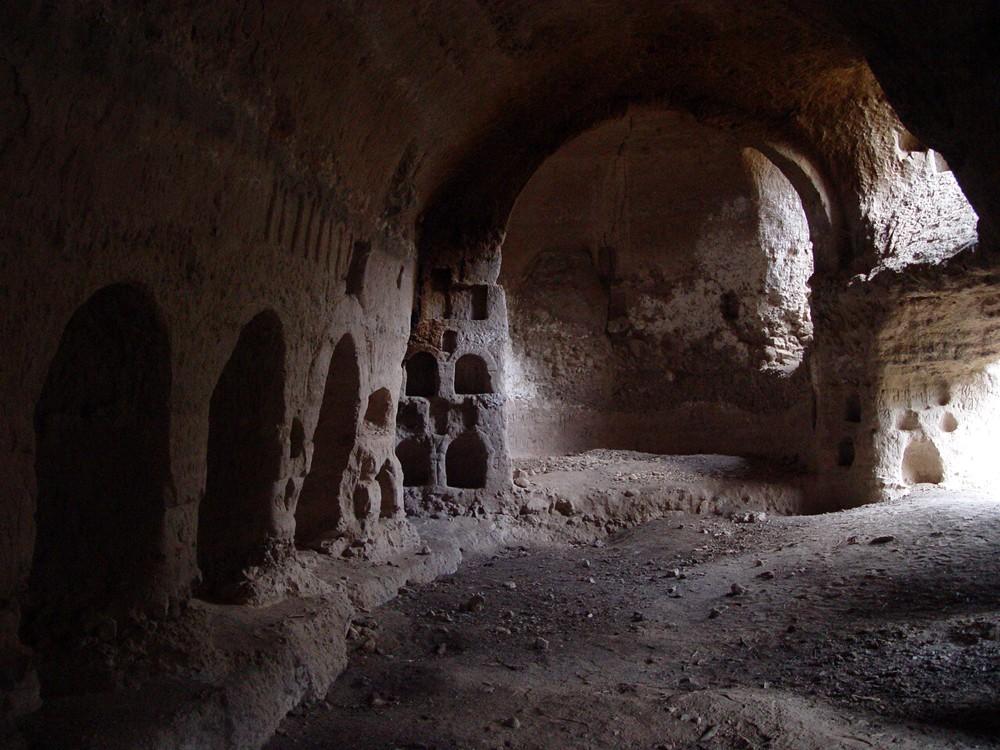
Unlocking the secrets of the caves
"The 21st century will be the century of Armenian archaeology. Many nations have already created Armenian Studies departments to learn about their past. They understand that the Armenian plateau is the ancient homeland of their ancestors," says Samvel Shahinyan, chairman of the Speleological Center of Armenia. He believes that the study of caves is the key to learning about early humans, since caves contain a thick layer of information on the prehistoric way of life.
Caves, natural cavities with one or more openings to the surface, provided our ancestors with a sense of protection. Cave dwellings differed in size and geological structure. In later times they were physically altered, in accordance with the world view and spiritual values of those who lived there. Before the development of communal living, caves served as temporary dwellings. If they were located in an auspicious climate, they were used for hundreds of years. As humankind progressed, people moved to smaller caves. Large caves were used to keep animals or for storage.
Sometimes they were used as sites for rituals. People started to modify caves, adapting them to their needs. In this period, the "cave culture" was formed. We now know of more than a hundred caves with drawings on the walls representing the daily life and concerns of early humans. In different lands, caves had their own appearances, shapes, and building styles-a sort of national character.
"Houses here are carved out of the earth, with entrances like the openings of wells. The lower parts are extensive." This is how Xenophon described Armenian houses in his book, the Anabasis.

We also know that people themselves created caves. Man-made caves are widespread in regions rich in sandstone. These stone layers are easy to carve, and because of minimal airflow, their caves are warm in winter and cool in summer. Such caves were used as dwellings in Armenia until the 1960s. Today, in the villages of Tegh and Khndzoresk in the Syunik marz, caves are used as cellars and cow-sheds. Local residents say that if underground tunnels, passages or cave entrances are opened up during construction work, they are filled up with sand or gravel. Samvel Shahinyan says the same thing has occurred many times in the Noragyugh, Butania, Aresh and Erebuni districts of Yerevan."There is almost every kind of cave in Armenia . There are even caves of hydrothermal origin, which are very rare in the world. These hollows originate when lava from the inner core of the earth mixes with hot springs , creating caves," explains Samvel Shahinyan.
Because living in caves was so common, Armenian chroniclers didn't address the issue. Only Xenophon in hisAnabasis described in detail the carved houses, tunnels and fortresses that were wide-spread in the Armenian plateau as something unusual and unique.
Caves with stone doors
The Speleological Center of Armenia has discovered more than 160 structures carved into rocks and caves that were used and renovated by humans in the area from Talin to Ashtarak and Araler-Aragats. They differ from man-made caves in other regions of Armenia in their stone doors. Caves with stone doors have a cave-hall, a stone door and a secret entrance, in the form of a difficult tunnel with specific masonry. They were mainly used as hidden storehouses for the food of small groups of people or communities. Only a few trusted people had access to these reserves. To fight humidity, basalt stones were laid along the cave-hall walls. Urned-shaped vessels for grain were carved or placed in the caves. There were also sealed vessels for liquids. At the end of the tunnels, there were stone-doors that swung inward.
These doors were a fundamental feature of the caves. If there was a hidden tunnel, there had to be a stone door at the end. The stone doors had pegs near the top that fit into specially carved holes in the frames. Both doors and frames were well-finished. Even now, they can be opened and closed. We don't know when these doors were built, though by the 18th century, they had no practical use anymore. Chroniclers wrote about them as amazing, unusual structures donated to humans by giants. According to the Speleological Center, caves with similarly-designed stone doors can be found only in the Aragatsotn marz. But there are no rock-carved churches in this region, and the churches that were built from the 5th to the 16th centuries don't have stone doors. Thus, we can conclude that the caves with stone doors are related to pre-Christian culture.
During the Soviet period, speleology was advanced in Armenia. There were even plans to use some caves as premises for the production of cheese and beer. Today, speleogy barely exists, and Armenian caves have yet to be studied. As Vahan Ter-Ghazaryan from the speleological center explains, "We mainly limit ourselves to discovering caves. We can't do any serious investigation, because we don't have the funds."
Photos by Emin Mkrtchyan
 Videos
Videos Photos
Photos




Write a comment